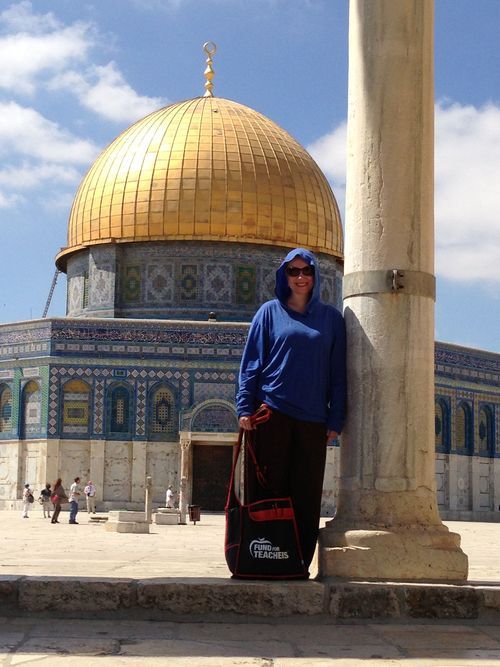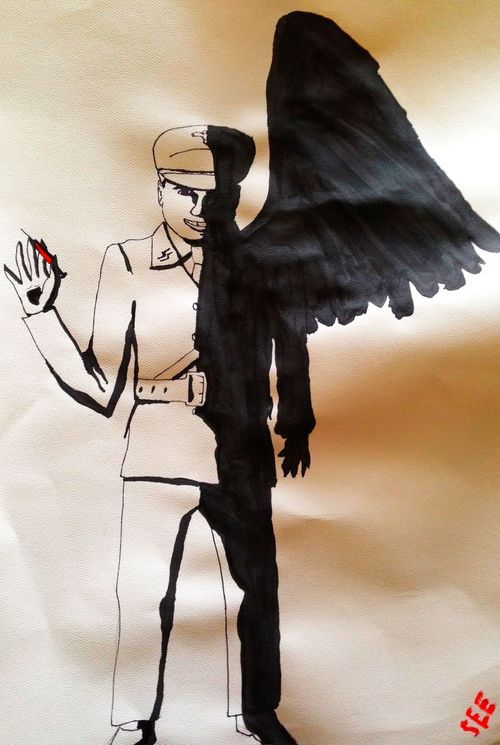[minti_dropcap style=”normal”]A[/minti_dropcap]s part of the “follow up” portion of an FFT fellowship, grant recipients complete a Passport that documents their learning and where they plan to go from here. Teachers answer brief questions in three categories:
- Personal and Professional Growth
- Impact on Your Classroom, School & Community, and,
- Imagining the Future.
During the month of August, we’ll share some of our Fellows’ Passports to get us all in the “Back to School” mode. Today, we’re proud to share the reflections of Nolan Hanson, teacher at Oscar F. Mayer Elementary in Chicago, IL. He described the threefold nature of this fellowship in his grant proposal:
“The funding for our art program was eliminated two years ago leaving a gap in our ability to provide our students a well rounded education. Furthermore, for the past two years our school has had a continuous improvement goal of strengthening our social emotional learning curriculum for both students and staff. To this end we hope to develop and foster a personal awareness and sense of self in all of our community members to increase our abilities to manage our emotions, practice empathy, establish and grow positive relationships and make responsible choices. Spanish, art and social emotional learning are not phrases that are often strung together. Yet focusing on them while at a professional development workshop with a group of colleagues I came to the focus of their intersection: Pablo Picasso.”

Fellowship Description
Complete an immersion study experience in Paris, Barcelona, Málaga and Madrid to contextualize the environs that influenced and impacted the life and art of Pablo Picasso.
Personal & Professional Growth

Shopping for paints at Sennelier, where Picasso purchased supplies.
The knowledge and insights I gained into the cultures and environments that impacted Picasso’s life and art have grown immeasurably as a result of my fellowship. Coupling this with my newfound knowledge of him as a person and an artist, as well as the complexity of his background, provided me with an understanding of how each of these elements are displayed in his work. I now feel capable of presenting these characteristics and experiences to my students and school community effectively.
First and foremost, my capacity to teach art in Spanish now exists, which it previously did not (except on a superficial level) as a result of: 1) the instruction I received from multiple museum staff members on art creation, appreciation and analyzation; and 2) having now observed, analyzed and appreciated the art of so many Spanish and Latin artists. Where I previously included art in my instruction, I will now be able to embed art in my instruction as a means for dialogue and inspiration.
Living for a month in Spain has to be the greatest personal accomplishment of my fellowship. During the writing of my proposal, I regarded being a Spanish teacher who had never been to Spain as a personal and professional deficiency. I can now state that deficiency has been satisfied with incredibly memorable experiences and professional growth. The fact that the entire fellowship was centered around the study of one of my Spanish heroes enhances the richness of each experience.
Impact on Your Students, School & Community

On a walking tour of Picasso’s Paris, at the St. Germain studio where he painted “Guernica.”
I will now be able to provide my students with the opportunity to use art in their weekly Spanish instruction. The authentic resources I was able to collect during my fellowship will provide them with quality enrichment tools to better connect with the experiences of Picasso and the culture of Spain. Using all of these resources together will allow us to create a positive social emotional learning environment that up to this point has been challenging to build within a language classroom.
In collaboration with the humanities teachers at my school we developed an interdisciplinary unit to cover the life and times of Picasso. Students will research and discuss the major world events that parallel Picasso’s lifetime in tandem with a micro focus on specific events that happened to Picasso. We will then combine these into an evaluation of his work and what influences we can see in his choice of subject, color, technique and message before students begin making their own artwork.
Imagining the Future
I envision celebrating my students learning by highlighting their work to peers, families and school community. This will be achieved in multiple ways, including classroom and hallway displays, submittingstudent work in our monthly International Baccalaureate and Montessori newsletters and posting them to my school community Instagram account.
Where I intend to look for solutions or build greater connections is through the social emotional learning aspect of the unit I developed using the knowledge, resources and tools I have gained from this experience. Employing my skills and capabilities to help students better understand and express themselves through art and writing and, in turn, build their capacities and skills to interpret and empathize with the messages communicated by their peers, thus building better relationships.
To a grant funder I would start by telling them thank you. To a friend I would tell them to apply now. There is no substitute for travel, experience, learning and growth. This fellowship provided me with the opportunity to fulfill multiple personal and professional goals. Fund for Teachers gave me a refined focus and a renewed passion. I’ve elevated my expectations for my students to be proficient communicators, while also including a space for them to build connections through creativity and Picasso.
Don’t forget to check out the previous three posts in our Passport to Learning series, featuring fellowships about British literature, African culture and biophilic design.
[minti_divider style=”1″ icon=”” margin=”20px 0px 20px 0px”]
 Nolan Hanson (pictured with Picasso) is a pre-K through 8th grade Spanish teacher at Oscar Mayer Elementary School in Chicago, Illinois. For the past 5 years he has built his classroom around the idea that every child has a unique background and learning style that should be fostered to embrace diversity and global citizenship. When he is not teaching in his classroom, he is committed to completing service learning projects with his middle school students, who have been honored at WE Day for the past 3 years. Enjoy more of his fellowship photos on Instagram.
Nolan Hanson (pictured with Picasso) is a pre-K through 8th grade Spanish teacher at Oscar Mayer Elementary School in Chicago, Illinois. For the past 5 years he has built his classroom around the idea that every child has a unique background and learning style that should be fostered to embrace diversity and global citizenship. When he is not teaching in his classroom, he is committed to completing service learning projects with his middle school students, who have been honored at WE Day for the past 3 years. Enjoy more of his fellowship photos on Instagram.


 Our project centers around our new school building, and our students will be creating new green-design features to be incorporated into the building. This may take a few years, but it could then include several grades that as part of this long-term, collaborative project. Most importantly, this project will help give any student who works on it more ownership of the new building and their community.
Our project centers around our new school building, and our students will be creating new green-design features to be incorporated into the building. This may take a few years, but it could then include several grades that as part of this long-term, collaborative project. Most importantly, this project will help give any student who works on it more ownership of the new building and their community. Carly Connor is a 10th grade English teacher and soccer coach who believes deeply in creating a safe, educational space for students to learn how to struggle with content, develop a global perspective, listen to opposing ideas, find a unique voice, and correctly use commas. Jill Padfield is a high school math teacher who previously taught at an International School in the Dominican Republic. In her free time, Jill enjoys playing ultimate frisbee, scuba diving, hiking and playing with her class-pet guinea pigs, Fib and Nocci.
Carly Connor is a 10th grade English teacher and soccer coach who believes deeply in creating a safe, educational space for students to learn how to struggle with content, develop a global perspective, listen to opposing ideas, find a unique voice, and correctly use commas. Jill Padfield is a high school math teacher who previously taught at an International School in the Dominican Republic. In her free time, Jill enjoys playing ultimate frisbee, scuba diving, hiking and playing with her class-pet guinea pigs, Fib and Nocci.  This is the question that inspired Jeff Wolfson’s 2017 fellowship to Monet’s most famous painting spot – Giverny, France. His goal was to develop with students and community partners a similar artist’s garden as a place for reflection and inspiration at Nathan Hale Arts Magnet School in New London, CT.
This is the question that inspired Jeff Wolfson’s 2017 fellowship to Monet’s most famous painting spot – Giverny, France. His goal was to develop with students and community partners a similar artist’s garden as a place for reflection and inspiration at Nathan Hale Arts Magnet School in New London, CT.





 Gretchen Philbrick, teacher at Norwich Free Academy in Norwich, CT, crammed as much Shakespeare into three weeks as possible, seeking him out in three countries. She participate in the European Shakespeare Research Association convention in London; attended the Gdansk Shakespeare Festival in Poland; and explored Romeo and Juliet’s Verona.
Gretchen Philbrick, teacher at Norwich Free Academy in Norwich, CT, crammed as much Shakespeare into three weeks as possible, seeking him out in three countries. She participate in the European Shakespeare Research Association convention in London; attended the Gdansk Shakespeare Festival in Poland; and explored Romeo and Juliet’s Verona.








 Based on my TGC fellowship, I was able to apply to then attend a conference for alumni of government sponsored international travel. As a participant, I was invited to apply for money to create a project on the subject of inclusion. I was awarded a grant from the State Department to organize and implement the Inaugural ChiUnderOneRoof: Chicago Immigrant and Refugee Resource Fair. My students and I hosted hosted 25 local community organizations who work to support our immigrant and refugee population.
Based on my TGC fellowship, I was able to apply to then attend a conference for alumni of government sponsored international travel. As a participant, I was invited to apply for money to create a project on the subject of inclusion. I was awarded a grant from the State Department to organize and implement the Inaugural ChiUnderOneRoof: Chicago Immigrant and Refugee Resource Fair. My students and I hosted hosted 25 local community organizations who work to support our immigrant and refugee population.



 With his Fund for Teachers grant, Eric researched Anthony, Pankhurst and the suffrage movement they incited. While in London, he found in Trafalgar Square the location of the 1908 rally for which Mrs. Pankhurst was arrested (pictured). He also studied with three avant-garde theatres, laying the groundwork for his students’ creation of a play about
With his Fund for Teachers grant, Eric researched Anthony, Pankhurst and the suffrage movement they incited. While in London, he found in Trafalgar Square the location of the 1908 rally for which Mrs. Pankhurst was arrested (pictured). He also studied with three avant-garde theatres, laying the groundwork for his students’ creation of a play about  Ponder and 23 students representing each grade spent three months researching the suffrage movement in the United States and Britain before collaborating on a script and set. Each performer created a character journal comprised of photos, newspaper articles and other primary resources they uncovered. An Oxford professor who authored a book on Lytton Skyped into class to inform students’ research, as well.
Ponder and 23 students representing each grade spent three months researching the suffrage movement in the United States and Britain before collaborating on a script and set. Each performer created a character journal comprised of photos, newspaper articles and other primary resources they uncovered. An Oxford professor who authored a book on Lytton Skyped into class to inform students’ research, as well.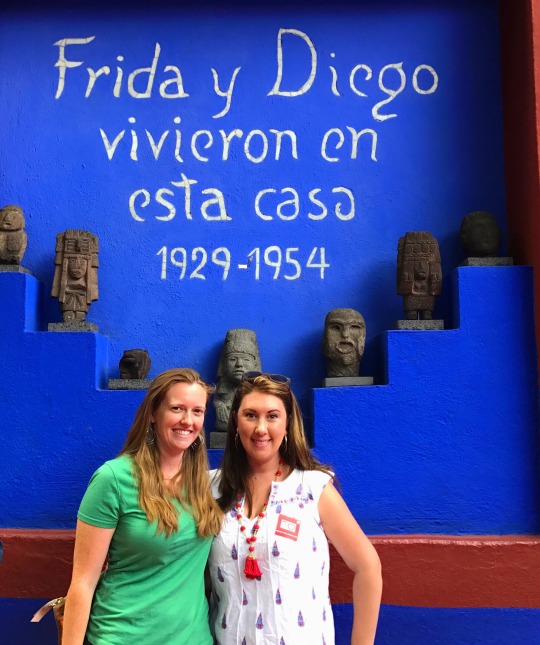 We know that for students to truly succeed academically, they must see mirrors of themselves in our curricula – art, media, and text – and validation of their identities in our classroom spaces. While we can empathize with our students, as white female teachers, we do not truly understand the depth of our students’ experiences. To effectively understand our students’ experiences, we need to cross borders ourselves and experience the displacement our students have experienced traversing these borders.
We know that for students to truly succeed academically, they must see mirrors of themselves in our curricula – art, media, and text – and validation of their identities in our classroom spaces. While we can empathize with our students, as white female teachers, we do not truly understand the depth of our students’ experiences. To effectively understand our students’ experiences, we need to cross borders ourselves and experience the displacement our students have experienced traversing these borders.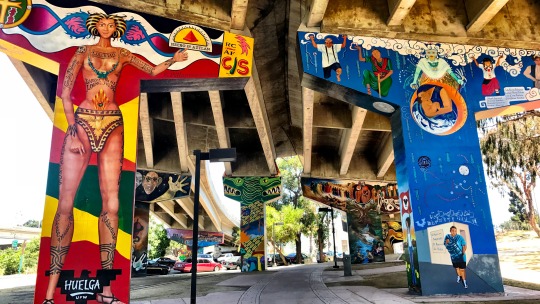
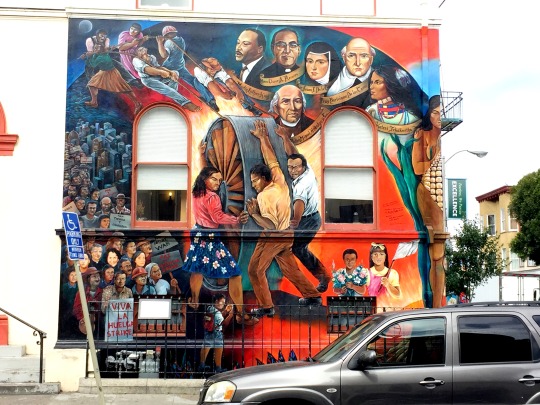
 Before leaving on my fellowship, I asked my fifth graders to journal their impressions of Russia. Their input framed my research, which I will now use as the foundation for their sixth grade social studies class. Together, we will now look at our diverse world through the common lens of art, specifically, the music, dance and architecture I experienced with my Fund for Teachers grant.
Before leaving on my fellowship, I asked my fifth graders to journal their impressions of Russia. Their input framed my research, which I will now use as the foundation for their sixth grade social studies class. Together, we will now look at our diverse world through the common lens of art, specifically, the music, dance and architecture I experienced with my Fund for Teachers grant. Understanding WWII through the eyes of the Russian People by exploring Victory Park and the Museum of the Great Patriotic War (WWII) in Moscow was an extensive history lesson. This country lost more than 25 million citizens to battle, starvation, disease and Stalin’s Terror. The museum also emphasizes the important role the United States and other Allies played in securing victory over Nazi Germany.
Understanding WWII through the eyes of the Russian People by exploring Victory Park and the Museum of the Great Patriotic War (WWII) in Moscow was an extensive history lesson. This country lost more than 25 million citizens to battle, starvation, disease and Stalin’s Terror. The museum also emphasizes the important role the United States and other Allies played in securing victory over Nazi Germany.